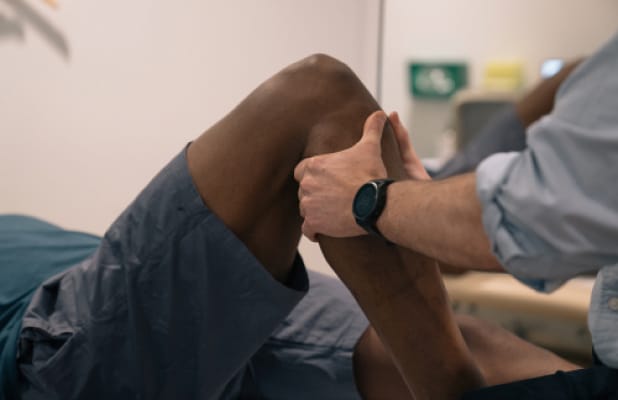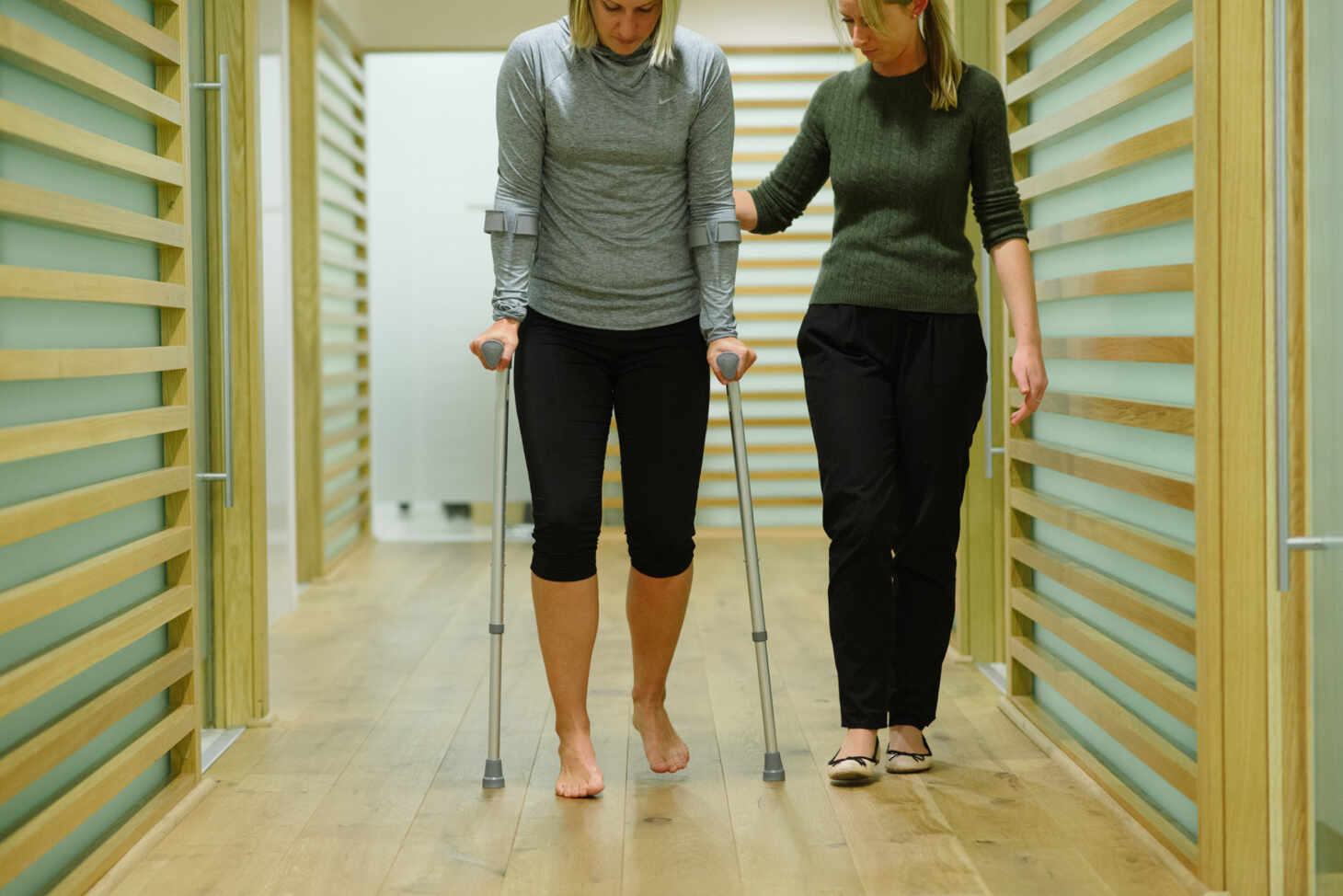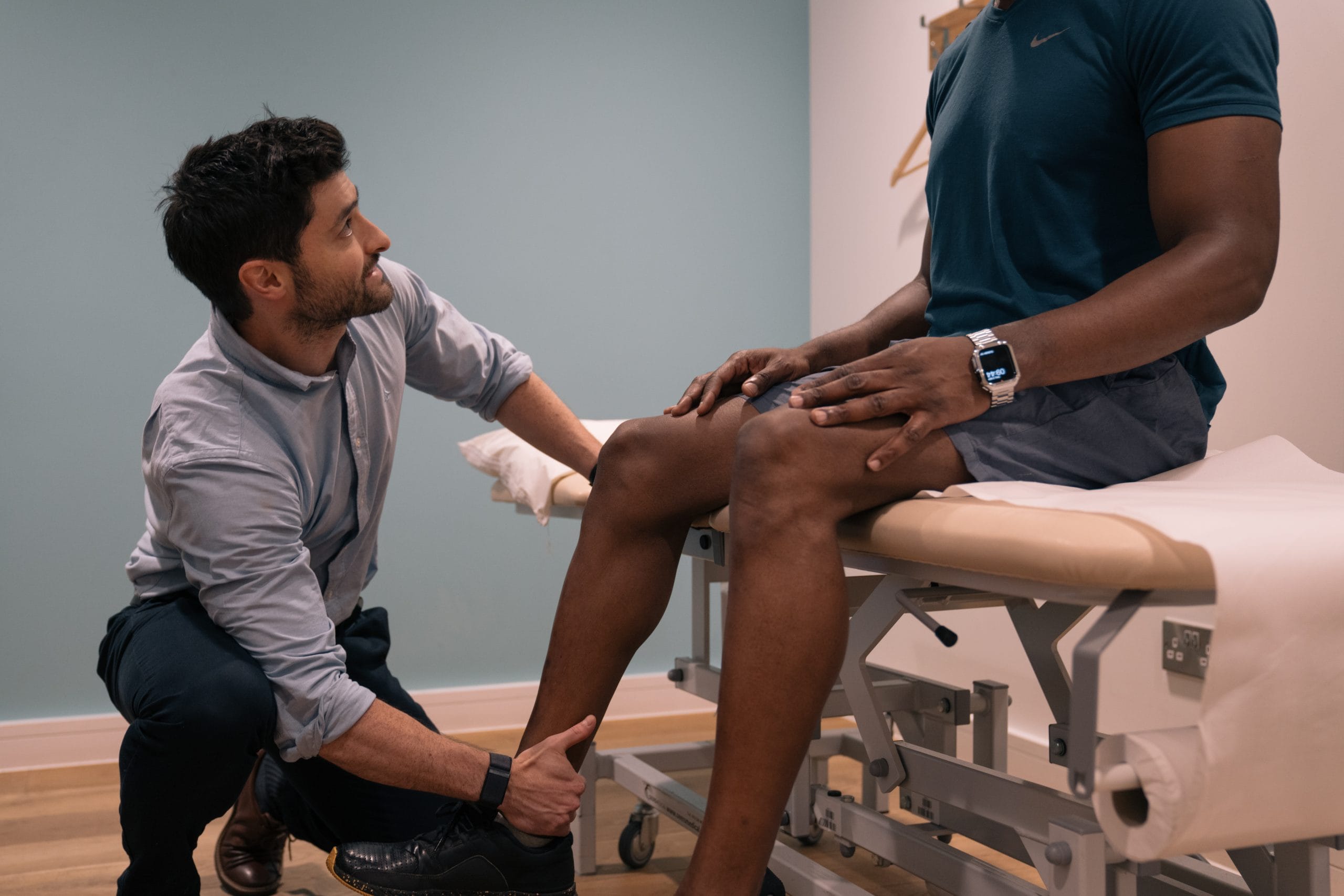Preventing Knee Pain in Cycling: Expert Tips

Pure Sports Medicine
- 13 July, 2021
- Lower Limb
- Podiatry
- 3 min read
Like us, you may love watching The Tour De France where many professional cyclists travel across France over 3 weeks and finish on the Champs-Élysées having covered a staggering 3414.4km!

There are many health benefits to cycling, and you don’t need to ride the length of the Tour to experience them. It is excellent for developing cardiovascular fitness and can also be an ideal low impact option for those recovering from injury.
As the mileage adds up, however, the repetitive nature of cycling can sometimes mean that overuse injuries occur. These are also known as gradual onset injuries and are not caused by sudden trauma, but build up gradually over time, often when distance or intensity of training increases too quickly.
What causes knee pain in cycling?
The most common overuse injury seen in cyclists is pain at the kneecap, or patellofemoral pain. This is usually described as an ache at the front of the knee around the kneecap, but it can also develop into sharper twinges.
It usually worsens with repetitive activity that loads the front of the knee. This differs from patellar tendinopathy – another common source of knee pain in cyclists. This is when pain is localised to the tendon below the kneecap and is often tender to touch. It will usually be worse at the start of a ride, ease off in the middle, and worsen again afterwards.
Some cyclists will experience pain on the lateral side of the knee joint, which can be attributable to iliotibial band (ITB) pain. In short, ITB pain is an overuse injury that causes compression to the structures at the side of the knee, which can result in inflammation and pain. Symptoms will typically worsen throughout the duration of a ride.
Although different structures of the knee are involved, the above conditions are all usually aggravated by repetitive knee extension against resistance, e.g., the downward phase of the pedal stroke.
The most common cause is a sudden change in training load on the bike, as this increases the demand on these structures without enough time for the body to adapt.
The appropriate management is often dependent on individual factors but will likely include 3 key elements: your training frequency, your strength program and your bike set-up.
Track your training load
During the summer’s longer days and warmer weather, inevitably keen cyclists spend more hours on the bike. Without realising, you can rapidly increase your training volume, and with this comes increased potential for injury. Initially, riding at a lower intensity can help to reduce your training load and, therefore, your symptoms.
Riding familiar routes can help control the intensity of your ride; it may even help to aim for a higher cadence and lower gear. Tracking your activity on Apps like Strava or Training Peaks can highlight where your training may have spiked and identify where it may be beneficial to add rest days.
Bottom line is, don’t suddenly increase how far or fast you ride. Make sure you gradually increase either of these so that your body has time to recover and you don’t have to take any time out for injury.
Some cyclists like to focus on training during the winter months so they can get the most out of cycling in the spring – autumn. Check out our top tips here.
Incorporate strength training
Often strength training is a taboo subject among cyclists for fear of gaining unwanted muscle bulk, but this is actually not the case.
Including resistance training in your program is not only a key part of recovering from an injury, it can also improve your power output and ultimately make you a stronger rider.
A well-rounded leg strength programme targets the main muscle groups (quadriceps, hip extensors and hamstrings) and can be completed just twice per week.
Our physiotherapists and Strength and Conditioning coaches can provide further advice and tailor a program to suit you.
Get a Bike Fit Analysis
There are various aspects of your setup that could have an influence on the loading of your knee during the pedal stroke; the position of your handlebars, the height of your seat or cleat positioning, the list goes on. And it can all have a knock on effect up the length of your body.
On average, an hour of cycling would require over 5000 pedal revolutions – that’s over 5000 times your knees extend to turn the pedals.
So, with an incorrect fit on the bike, a small issue can quickly become a bigger problem over a long ride.
In relation to knee pain, it is primarily your cleat and saddle positions that will be the main factors, and the optimum position of these will vary for each individual. Our bike fitters can assess and help you find the best fit. Keep scrolling to see what is included and what you can expect from a Bike Fit.
It may sound like a lot right now, but focusing on these aspects is how the pros manage and avoid knee pain so they can perform their best on their bikes. If it’s good enough for them, then it is good enough for you!

Advice
Over the last 20+ years our experts have helped more than 100,000 patients, but we don’t stop there. We also like to share our knowledge and insight to help people lead healthier lives, and here you will find our extensive library of advice on a variety of topics to help you do the same.
OUR ADVICE HUBS See all Advice Hubs

